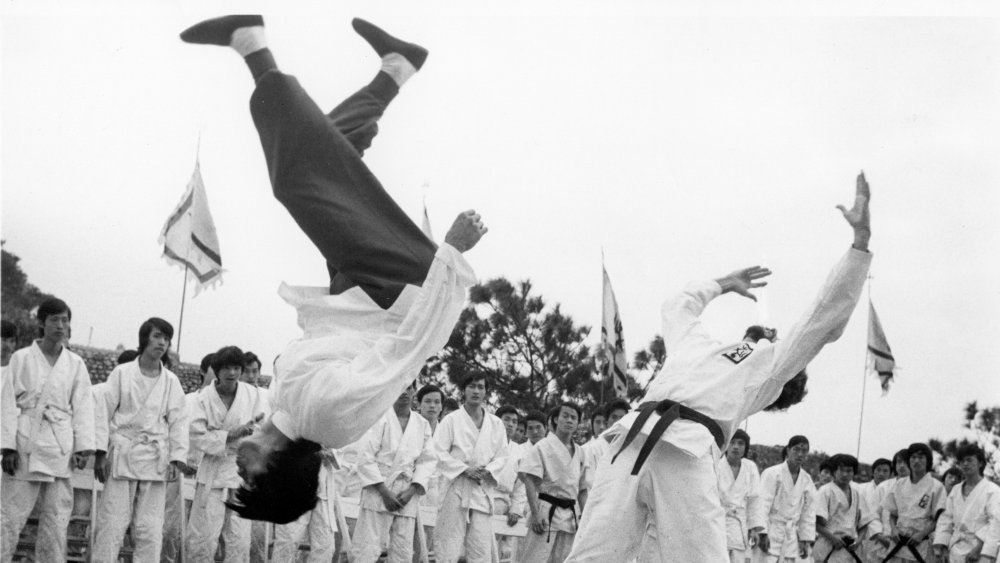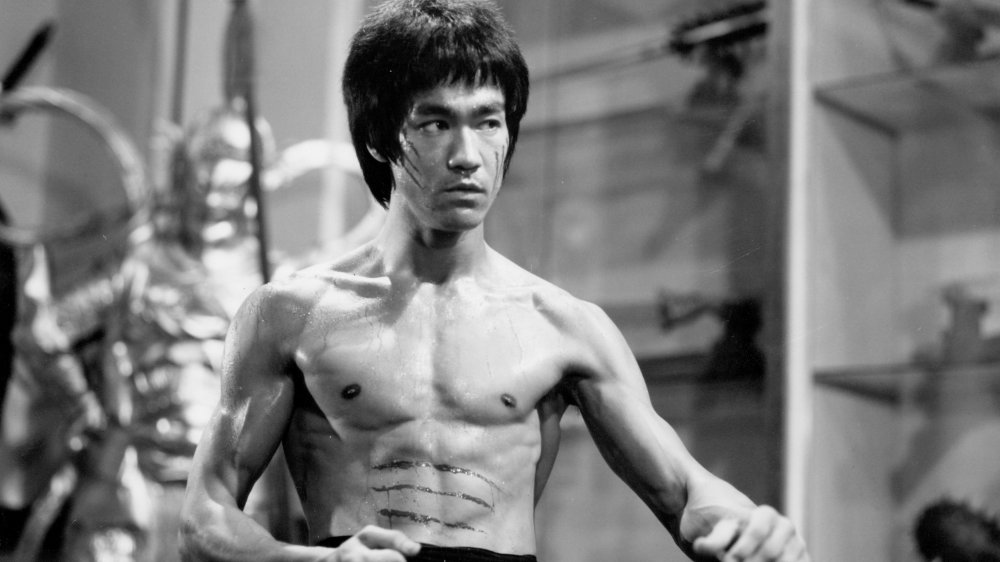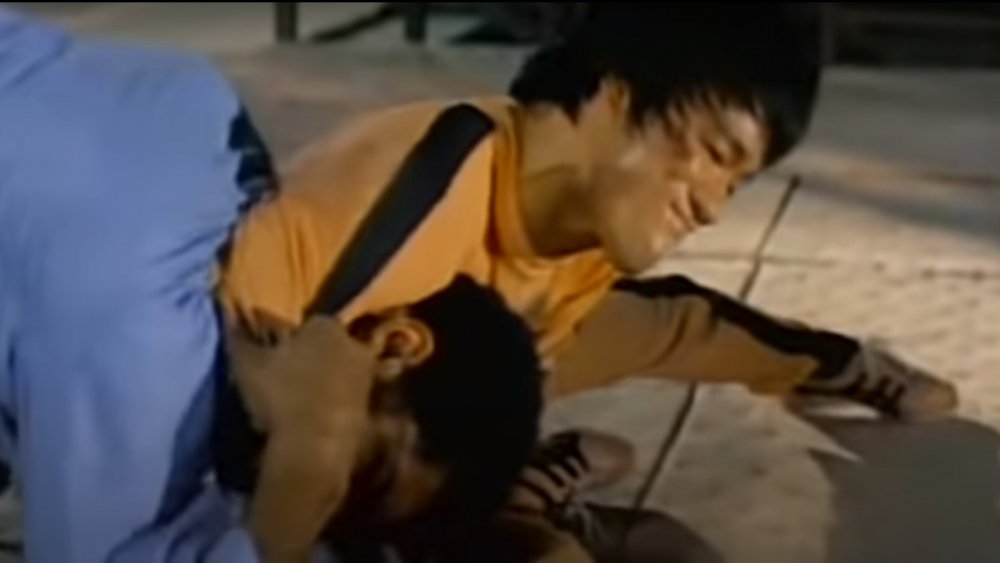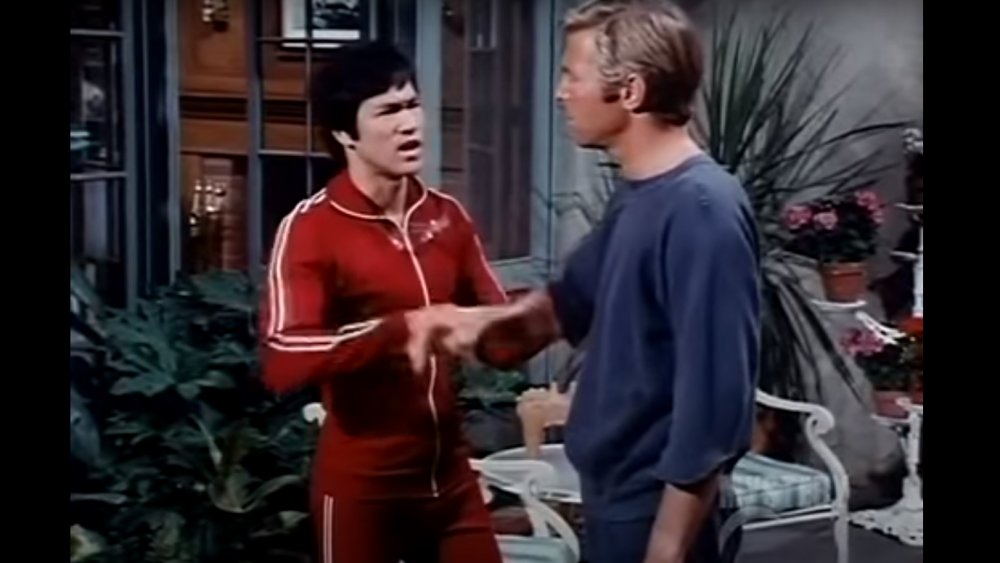The Real Reason Bruce Lee Had His Armpit Sweat Glands Removed
Ah, vanity. How many of us have been miserable in order to look good? (Even great?) Or at least think we do? The trail of history is littered with fashions that caused biological catastrophe for the sake of some misguided attempt at beauty. Rib bones surgically removed to make curvier waistlines. Corsets that cinched in women's waists so tightly they couldn't breathe, leading to pneumonia. Back teeth taken out to enhance cheekbones. Not to mention foot binding, hair transplants, and nose jobs.
Botox (which is actually a brand name) treatments to eliminate facial wrinkles and crow's feet around the eyes means injecting a bacterium neurotoxin, clostridium botulinum, which blocks nerve signals to the muscles, according to the U.S. Food and Drug Administration. The muscles then cannot contract, and so they relax, offering smoother skin. For the person with a neurotoxin in their face. As more than one person has reasoned, "It's better to look good than to feel good." Plenty of character actors have made a tidy living by looking odd, if not downright unattractive, but for the leading roles, aspire to perfection. And if you aren't born that way, make it happen.
Lee maintained a body fat ratio of around 5-6 percent
No doubt it was a mixture of dedication to physical perfection and wanting to make successful movies that drove supreme martial artist Bruce Lee. He first graced the screen as a baby, according to Biography, and went on to a decent career as a child actor while at the same time he polished his skills in the martial arts. He wrote poetry and at one time majored in philosophy at the University of Washington. It should surprise no one that Lee danced extremely well, winning a Hong Kong cha-cha competition. Nor should it surprise anyone that all of this led to Lee made a stab at Hollywood, where he won roles on TV series like The Green Hornet as Kato, and on Longstreet as the martial arts instructor of a blind insurance investigator. It was on the latter drama that he's heard giving some of his most famous advice: "Empty your mind. Be formless. Be shapeless. Like water ... Be water, my friend."
Lee was not just an actor and fight choreographer; he also taught martial arts (and dancing), picking up some major Hollywood clients along the way — Steve McQueen, James Garner, James Coburn — before returning to Asia and becoming a powerhouse in the Hong Kong film industry. He wasn't content to be limited to acting; he had aspirations to direct as well.
Aesthetics are even more important on film
Bruce Lee has become legendary, not only for his accomplishments, but for the extreme discipline that enabled him to reach remarkable professional and personal achievements. It was not just an occasional mental stroll. Lee kept a small notebook with him at all times, according to Brainpickings, jotting memoranda about the day, but also a series of reminders and affirmations, helping him maintain his focus, like this one: "Realizing that my emotions are both POSITIVE and negative I will form daily HABITS which will encourage the development of the POSITIVE EMOTIONS, and aid me in converting the negative emotions into some form of useful action."
Artists sacrifice for art. Whether the art of film, or for martial art, Lee was no exception. He kept strict dietary rules. Tiger Fitness estimates that his body fat ratio was somewhere around 5-6 percent when he filmed Enter the Dragon. It gave him a unique look, but he also believed it helped him achieve peak performance as a martial artist — 145 pounds of muscle on a 5'8" frame. Part of the art of movies is aesthetics — being willing to look good over feeling good. It wasn't that he was an extraordinarily sweaty individual, says The Cheat Sheet.
Lee instructed a blind insurance investigator to 'be water'
According to History, Lee had decided that sweaty underarms were unappealing on the sliver screen, so he had them removed. True, the human body's sweat glands can be kind of gross, but they also perform an important function: producing fluid to help cool the body when it starts to overheat. He'd already had one incident of heat stroke during the summer while re-recording film dialogue in a room with the air conditioning turned off.
His death at age 32, in the apartment of his mistress, is now attributed to heat stroke as well, leading to cerebral edema — swelling on the brain. He'd been acting out some of the fight choreography on the film he had just begun during a brutal Hong Kong summer. Afterward, he lay down to rest, and died.
It's not unusual. As explained by Dr. Lisa Leon, hyperthermia expert at the U.S. Army Research Institute of Environmental Medicine, one incident of heat stroke often leads to another. "Patients experience multi-organ dysfunction during the hours, days and weeks of recovery," she said, "which increases the risk of long-term disability and death." Even for a dragon.



